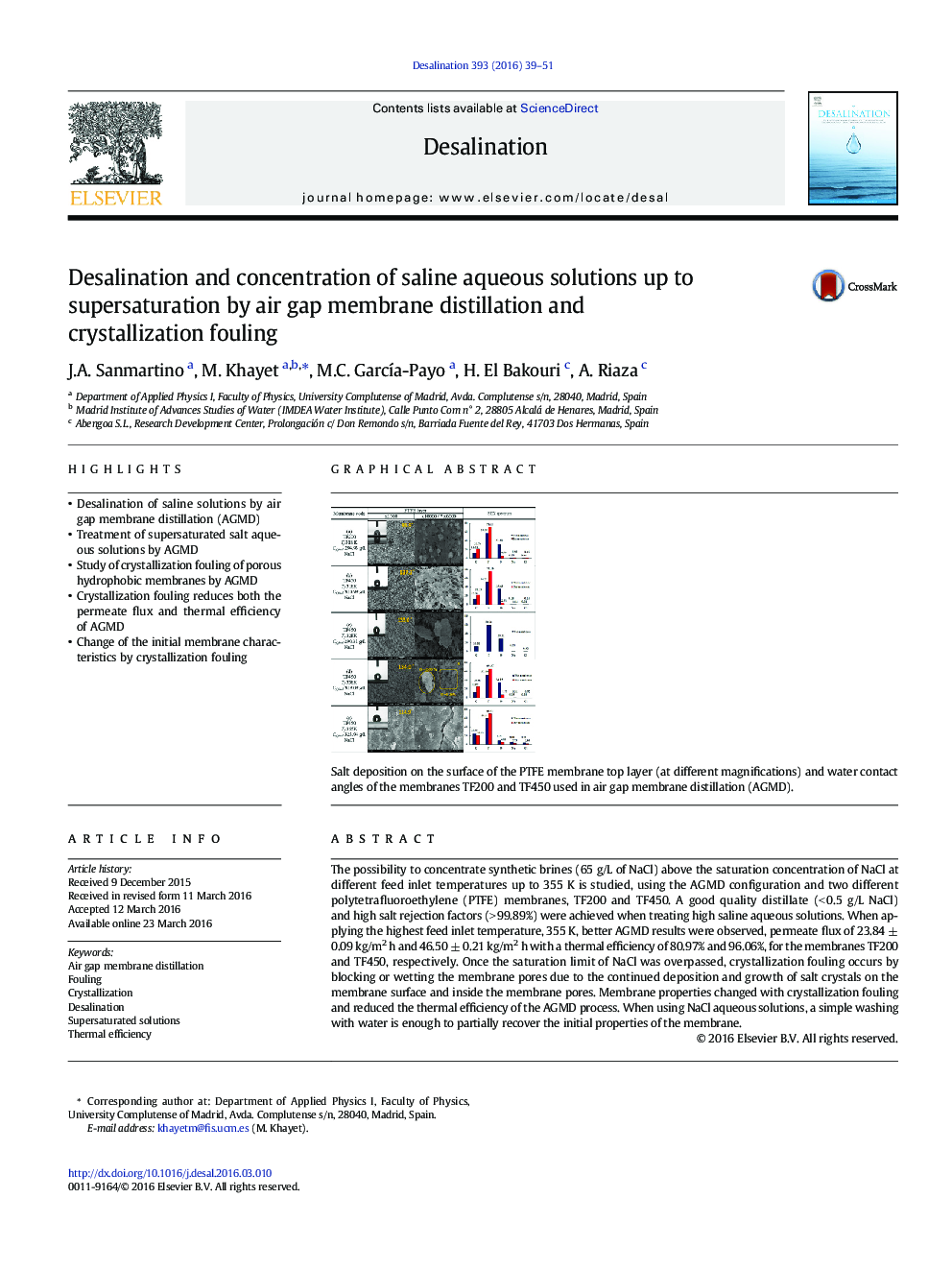| Article ID | Journal | Published Year | Pages | File Type |
|---|---|---|---|---|
| 622718 | Desalination | 2016 | 13 Pages |
•Desalination of saline solutions by air gap membrane distillation (AGMD)•Treatment of supersaturated salt aqueous solutions by AGMD•Study of crystallization fouling of porous hydrophobic membranes by AGMD•Crystallization fouling reduces both the permeate flux and thermal efficiency of AGMD•Change of the initial membrane characteristics by crystallization fouling
The possibility to concentrate synthetic brines (65 g/L of NaCl) above the saturation concentration of NaCl at different feed inlet temperatures up to 355 K is studied, using the AGMD configuration and two different polytetrafluoroethylene (PTFE) membranes, TF200 and TF450. A good quality distillate (< 0.5 g/L NaCl) and high salt rejection factors (> 99.89%) were achieved when treating high saline aqueous solutions. When applying the highest feed inlet temperature, 355 K, better AGMD results were observed, permeate flux of 23.84 ± 0.09 kg/m2 h and 46.50 ± 0.21 kg/m2 h with a thermal efficiency of 80.97% and 96.06%, for the membranes TF200 and TF450, respectively. Once the saturation limit of NaCl was overpassed, crystallization fouling occurs by blocking or wetting the membrane pores due to the continued deposition and growth of salt crystals on the membrane surface and inside the membrane pores. Membrane properties changed with crystallization fouling and reduced the thermal efficiency of the AGMD process. When using NaCl aqueous solutions, a simple washing with water is enough to partially recover the initial properties of the membrane.
Graphical abstractSalt deposition on the surface of the PTFE membrane top layer (at different magnifications) and water contact angles of the membranes TF200 and TF450 used in air gap membrane distillation (AGMD).Figure optionsDownload full-size imageDownload as PowerPoint slide
